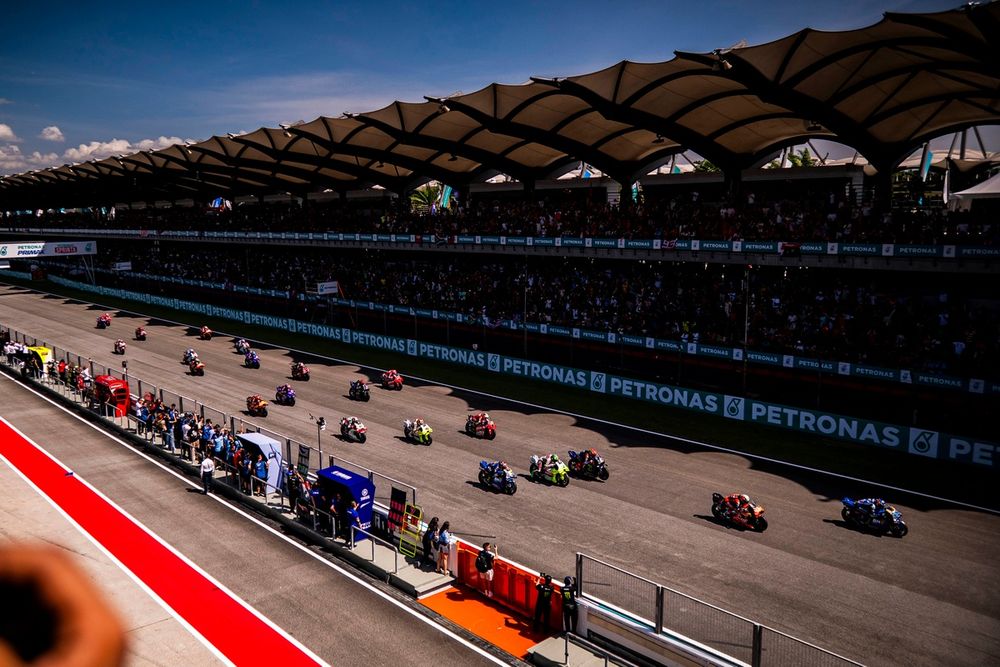The Sepang International Circuit hasn’t ruled out the possibility of the Malaysian Grand Prix returning to the Formula 1 calendar, despite the government’s refusal to financially support the event.
Malaysia dropped out of F1’s schedule after 2017, just as Liberty Media took over the series from CVC Capital and propelled it to new heights.
In recent years, circuits around the world have enjoyed record attendances, boosting their bottom lines, while Liberty Media has also been actively working with promoters to improve the financial viability of each grand prix.
Under the improved financial climate, Sepang’s management has been increasingly proactive in seeking the return of the Malaysian GP, believing that pulling the plug on the race was a “mistake”.
However, the Malaysian government has made it clear that it won’t provide any funding to revive the event, with Liberty reportedly quoting a hosting fee of around $70million.
Nevertheless, the circuit remains hopeful that Malaysia could one day return to the F1 map, even if a comeback appears unlikely in the near future.
“I’m pretty sure Formula 1 will come back someday, but not now,” Sepang CEO Azhan Shafriman Hanif told Autosport. “I think the government’s effort right now is solely focusing on what the public needs rather than spending millions of dollars and ringgit to pay for Formula 1.
Sepang circuit aerial view
Photo by: Sutton Images
“But I do believe with the right support from corporate in the future and so on, maybe we can bring it back. But at the moment, it’s a no for us. But I do hope Formula 1 comes back one day.”
Asked if it would be possible for Sepang to host an F1 race without government funding, Shafriman said: “I wouldn’t say it’s impossible. We just need to find the right partner to come in. But of course, when they pay high money, assets and so on, what do they get back in return? So those are the things that we need to consider and we need to discuss further.
“But then again, if ever Formula 1 were to come back, we are ready to host. And hopefully, the government won’t be burdened by the rights fee.”
F1’s calendar is already at its maximum capacity of 24 races, making it difficult to accommodate new or returning circuits in the short term.
A potential bid from Malaysia will also face stern competition from other countries seeking to join the calendar, including Thailand, where the government has set aside $1.2bn for a street race in Bangkok. Rwanda and Argentina are also believed to be vying for a spot in F1.
Potential slots could open up on the calendar with Zandvoort dropping out after 2026 and Spa-Francorchamps joining the rotation system that will see it not hosting races in 2028 and 2030.

Race Start
Photo by: Shameem Fahath / Motorsport Network
Shafriman acknowledged that finding a place on an increasingly-crowded F1 calendar would be challenging, but highlighted how Sepang’s infrastructure remains up to standard.
“There’s a lot of competition out there. We are not the only ones who are pursuing Formula 1. There are other countries that are queuing up and everything,” he admitted. “If you see all the other circuits in the world, they are reinventing themselves. They are doing new things.
“But in terms of the homologation of the track, in terms of the facilities that we have here, we just need to tweak a little bit here and there so that we can prepare for the event itself.”
Sepang’s current contract for MotoGP expires at the end of 2026, but the circuit is confident of striking a new multi-year deal by the start of next year.
F1’s owner Liberty Media now holds a majority stake in MotoGP’s rightsholders, Dorna Sport.
“At the moment, our main goal and our main aim is to continue hosting MotoGP in the future. And hopefully, the other international races will come over apart from having MotoGP here,” said Shafriman.
We want to hear from you!
Let us know what you would like to see from us in the future.
— The Autosport.com Team








